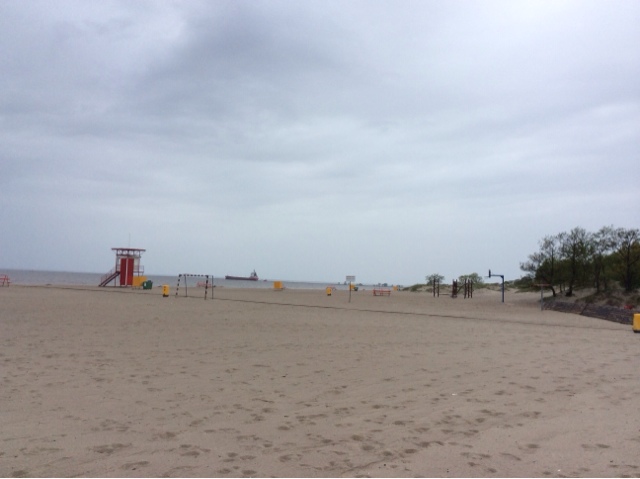The official route onwards was down a main road, with the wind against us. It didn't seem very attractive, so we diverted inland along cycle route 17. The cycle routes were well marked here. Today was sunny and a light wind mainly behind us. We passed through villages with shops and cafés. When one cycles through remote places, one tends to stop at cafés. When cafés become more frequent one has to resist the temptation to stop at every one. There was also lots to look at as we passed fields and farms and villages and streams: old houses beautifully done up, old houses falling to pieces, flowers such a lilac with a strong smell, storks on their nests. The last few kms were on a dirt road. Not so good as the soil is very sandy, so tends to get rutted and difficult to cycle through unless you have a mountain bike.
The campsite was round lake Burtnieks, several kms beyond Burtieki. Fortunately Tom had emailed them to ask if they were open, so we knew it existed, which after 94kms was encouraging. It was in a beautiful position on a slight hill, overlooking the lake. Cabins were quite cheap and as it is still very cold at night, we went for that option. Stood and watched the sun setting over the lake and listened to great birdsong. An idyllic end to a good day.


















































